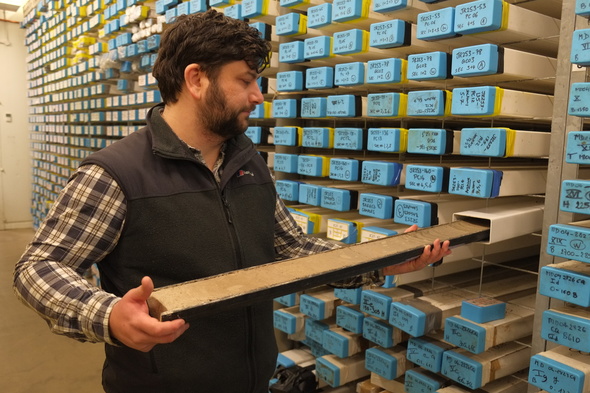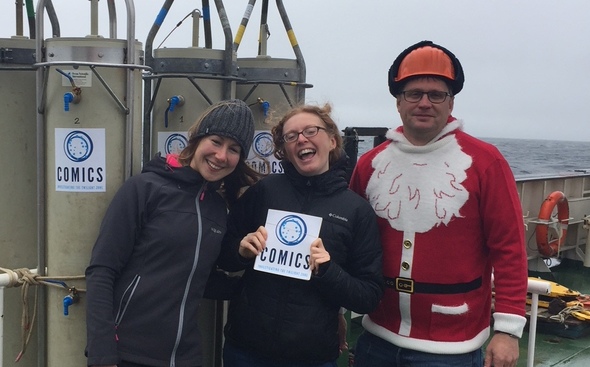 Large volume submarine landslides, triggered by the inception and growth of submarine volcanoes, represent among the largest mass movements of sediment on Earth's surface. This is according to research published this week in Nature Communications by scientists at the NOC. These landslides could potentially cause tsunamis, and represent a significant, and as yet unaccounted for marine hazard. Read more on our website or watch a video of lead author Dr James Hunt summarising this research.  The data has been processed from the fleet of pioneering marine robots deployed to explore the seas northwest of the Orkney Islands last summer, and they successfully recorded whales and porpoises as well as collecting high quality environmental data including temperature, salinity, tidal currents, plankton abundance, weather and wave conditions. Listen on our website Prof Russell Wynn of the NOC, and co-ordinator of the mission, said: "This is the largest fleet of marine robots to be deployed in UK offshore waters. The mission gathered a huge amount of useful data, including the sounds of several marine mammals. These data can help us to identify important biodiversity hotspots, and assess the potential impacts of noise pollution on marine animals." |
 The meandering nature of seafloor channels was thought to play a key role in how turbidity currents can travel for such long distances over almost flat slopes; but this could not be tested until now because of the lack of direct measurements of these flows. Highly detailed measurements of fast-moving turbidity currents from one of the largest submarine canyons in the world reveals that these flows are different to rivers on land. This difference was previously predicted from laboratory experiments, but could not be proven in the real world due to the powerful and damaging nature of these avalanches in the deep ocean. New NOC research published this week in the Journal of Geophysical Research Letters, analyses the first detailed measurements of deep sea turbidity currents at a meander bend. This has provided the first opportunity to understand the differences between flows at meander bends in rivers, estuaries and the deep sea. This research is helping to inform mitigation strategies for routing cables on the seafloor and to better understand the deposits left behind that create important oil and gas reservoirs. The paper is a collaboration with Durham, Southampton and Hull Universities and can be read by following this link. NOC's Jackie Pearson gave an overview of the NOC to the membership of the Sway & District Probus Club in Milford-on-Sea. Members enjoyed the "detail and information covered" and this had "certainly stimulated further interest about the activities of the National Oceanography Centre". The Club is keen to visit the NOC again and learn more about our science and technology. The gentlemen in the audience included retired professionals from the engineering and medical professions and a former employee from the Institute of Oceanographic Sciences, Deacon Laboratory. | |  |
Is this the most remote Christmas jumper day celebration? NOC scientists in the Southern ocean deploying the final instruments of the COMICS expedition.The COMICS project is investigating the relationship between the flow of carbon in the ocean's twilight zone, and the ability of the ocean to store it.  Staff at the NOC also showed support Save the Children by wearing Christmas jumpers.  |
No comments:
Post a Comment